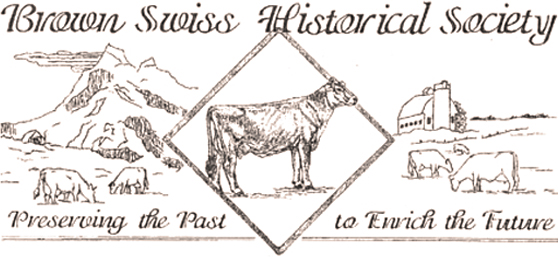
Since 1880, when the Brown Swiss Cattle Breeders’ Association was established, directors and staff have updated the “history” and development of the breed in the U.S.
The Brown Swiss Historical Society: Compiles previous efforts, researches breed histories published by others, adds new statistics, prepares printed materials to be available to breeders, recognizes early pioneer breeders’ contributions to the developing dairy industry in the 20th Century by “Putting a human face on the history of the breed by preserving their stories,” develops a storage system for historical documents, information and artifacts in the office and explores future possibilities of establishing a museum and educational program for those wishing to access information.
“Bringing together the cows, the people, and the events that tell the story of the Brown Swiss Cow, her journey from Switzerland and her development in the United States.”
RECOGNITION
Master Breeder Award
Proposed by the BSHS for the purpose of recognizing people important to the continuing progress of the Brown Swiss breed, the Master Breeder Award recognizes an active breeder who has successfully developed a breeding program that accentuated cow families, especially those that contributed significantly to the advancement of the breed. Donated by Vine Valley Farms, this award is known as the Leon W. Button Master Breeder Award.
Historical Master Breeder Recognition
This award recognizes a breeder who has retired or passed on. The recognized breeder must have a legacy that has made a lasting impression on breed progress by developing one or more strong cow families.
To nominate a breeder, send his or her name to Russ Giesy at russ47giesy@yahoo.com or call 352-669-0180 or Dr. Roger Neitzel at rogerrn@aol.com or call 608-365-4474.
Breeders vote for these awards in March and the recipient is honored at the National Brown Swiss Convention in July.
BSHS Hall of Fame
In 2018, BSHS has established the Hall of Fame Award program to supplement the Master Breeder program by recognizing other groups of people that have made great contributions to the advancement of the Brown Swiss breed in the US and/or to the Brown Swiss Historical Society.
The award categories are:
1. Pioneer Award
Recognizes those that helped develop the Brown Swiss breed throughout the US during the early years, 1869-1940.
(Importers, early breeders, significant herds across the country)
2. Meritorious Service Award
a. BSHS Contributors: recognizes people that have served, supported or contributed to the evolvement of BSHS.
b. Breed Promoters: recognizes people that have effectively promoted the Brown Swiss breed.
(BSA secretaries, presidents, classifiers, area representatives, Bulletin editors, Industry leaders, major contributors, etc.)
A plaque listing the recipients will be displayed at the National Office in the BSHS Museum.